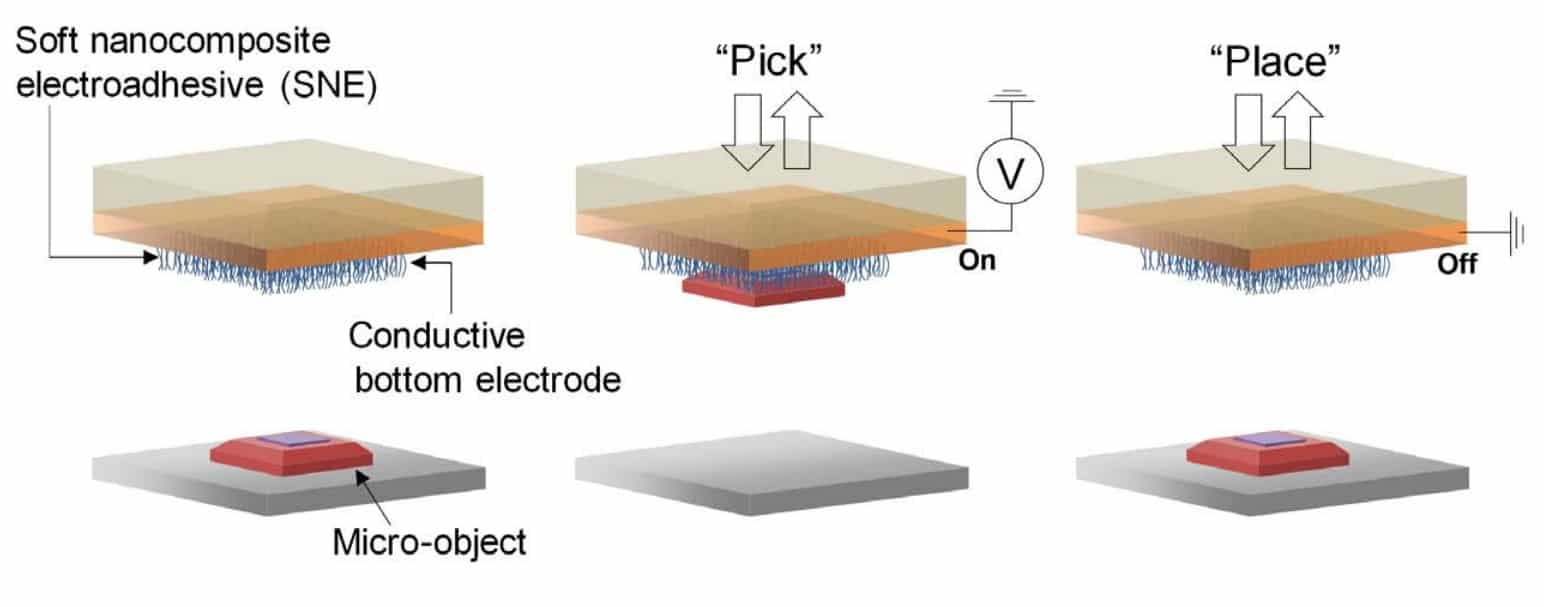Scientists have introduced a new way of controlled movement of micro- and nanoparticles, based on the effect of electroadhesion of nanotubes, that is, changes in the adhesion force of nanotubes and particles depending on the applied voltage. This principle allows working with both metal and dielectric bodies, and the technological application of the method based on it can lead to further miniaturization of electronics, since at the moment this process is constrained, including by the complexity of reducing robotic grips.
Modern electronic devices consist of a huge number of tiny elements that must be placed with high precision in the right places on the board. Today, the miniaturization of components has reached the scale of flour grains. For example, the most modern LEDs for displays can be up to several microns in size.
In many cases, these parts are moved by special mechanical or vacuum grips. However, as the size of the devices decreases, these retention methods become less effective, since in the microworld, gravity decreases with decreasing bodies faster than the Van der Waals surface forces responsible for electrostatic attraction. As a result, mechanical micromanipulators can not independently cope with the placement of parts in the calculated places and require additional effort, which is usually the adhesion of the substrate.
A paper by American scientists led by John Hart of the Massachusetts Institute of Technology describes a method for controlling the adhesion of a substrate consisting of a loose forest of carbon nanotubes coated with dielectric ceramic. The device created by the authors on the basis of this principle allows manipulating objects up to 20 nanometers in size.

S. Kim et al. / Science Advances, 2019
The application of electrical voltage temporarily polarizes the dielectric shell of the nanotubes, which increases the adhesion, for which electrostatics are responsible in this case, more than a hundredfold. As a result, a forest of nanotubes, which is normally about 40 times less “sticky” than most other solids, forms a much stronger bond when 30 volts are applied. The corresponding experimentally measured force for a 200 by 200 micron area was 2.3 micronewtons. Relieving stress caused a sharp decrease in adhesion.
The demonstrated size of the captured particles is much smaller than the capabilities of modern mechanical manipulators, which can hardly cope with the movement of bodies less than 50 microns. Scientists also note that the effect of electro-adhesion is already used in some industrial technologies to move large objects, such as fabrics or silicon wafers. However, this principle has never been applied to microscopic bodies.
